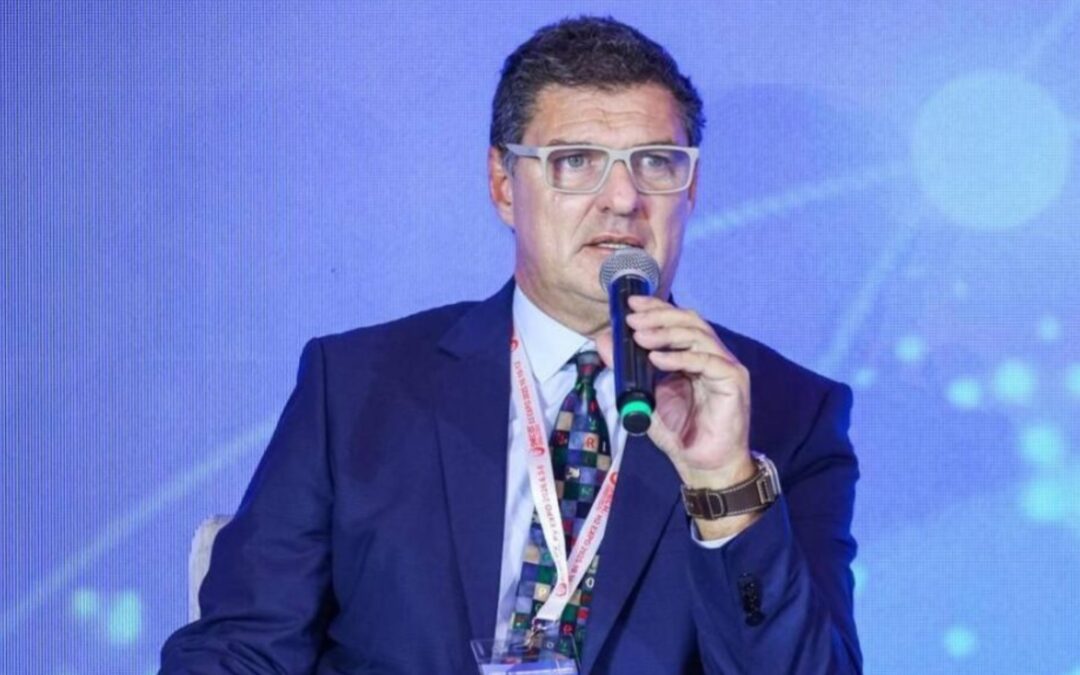The financial equation for renewable energy in the region is shifting. According to Héctor Nuñez, North Latam Director at Sungrow, the sharp drop in battery-system prices is making hybrid solar-plus-storage plants more competitive than conventional power stations for delivering round-the-clock (24/7) supply.
“A solar PV plant with storage can now achieve a lower CAPEX than a thermal power plant —and be built faster,” he said during the fifth edition of Future Energy Summit (FES) Colombia.
This shift not only strengthens the competitiveness of clean energy, but also transforms how new projects are designed and financed. Nuñez notes that this technological leap—solar PV plus battery energy storage systems (BESS)—could materialize in Colombia in the short term. For the company, hybrid parks are no longer just a technological solution; they represent a superior economic alternative to conventional generation.
Sungrow currently has 1.4 GW of signed solar PV contracts in Colombia, of which nearly 1 GW is already injecting power into the grid. In addition, the company was awarded a BESS project of nearly 7 MWh, now in operation and DC-coupled to a PV inverter—one of the country’s first advanced integration cases between solar generation and storage.
In this context, CREG’s Draft Resolution No. 701-103 (2025) is seen as a positive step, as it sets technical, commercial and operational conditions for integrating battery energy storage systems (BESS)—or SAEB, according to local terminology—into the National Interconnected System (SIN). This could help reduce solar curtailment currently triggered by slow development and construction timelines for transmission infrastructure.
However, one of the most critical bottlenecks for the growth of non-conventional renewable energy (ERNC) in Colombia remains grid connection. Nuñez stresses that speeding up permits is essential for expanding supply at the pace required by rising demand.
Government authorities have also noted that several projects with assigned connection points from previous administrations showed no real progress, leading to a decision to free up more than 5,000 MW of capacity for new renewable parks.
Growth prospects and regional experience
Although Sungrow has historically focused on utility-scale projects, the Colombian market has also sparked interest in distributed generation. Nuñez highlights growing opportunities in the segment of 1 MW “mini-farms”, which offer faster grid connection and lower regulatory complexity.
“We are now targeting that market, and we’ve seen a very strong spike in sales. This segment will grow significantly, helping diversify the energy mix so that renewables exceed 12% participation,” he noted during FES Colombia.
Beyond its local strategy, Sungrow has supplied more than 25 GW of solar PV and surpassed 10 GWh in storage contracts across the region—evidence, the company argues, that the technology is fully mature.
“We want to bring that experience to the Colombian market,” Nuñez said. He believes the country’s future development will depend on key factors such as permitting, environmental licensing and access to financing. Still, he emphasizes that Sungrow’s teams are prepared to adapt even to regulatory or technical shifts.
“There is a clear need to expand supply as demand continues to rise,” he concluded, underscoring that storage is no longer just a technological promise but a financially viable solution and a real lever for the energy transition.































